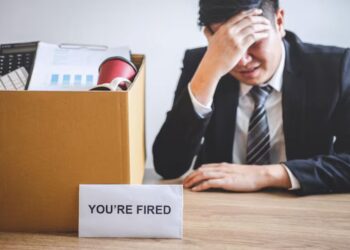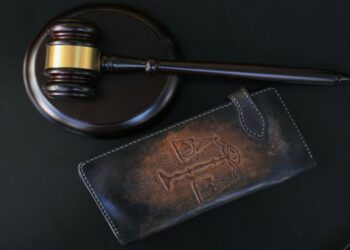Auto accidents are stressful events, especially when you’re not at fault. If you find yourself in this situation, knowing the following steps to take is crucial for protecting your rights and ensuring you receive proper compensation. What to do after an auto accident not at fault? This guide will walk you through the essential steps you need to follow—from gathering evidence and exchanging information to dealing with insurance claims and understanding your legal rights.
Being involved in a car accident can result in property damage, injuries, and complex insurance claims. Even if you’re not the one responsible for the crash, you still need to follow a series of actions to safeguard yourself. Failing to do so could result in unnecessary delays or denials of insurance payouts, or even lead to legal consequences. Whether you’re at the scene of the accident or in the weeks following it, being informed about the next steps is crucial for a smooth resolution.
Let’s explore the most essential actions to take when you’re involved in an accident that wasn’t your fault. If needed, consult an Auto Accident attorney Florida to ensure your rights are fully protected.
What to Do After an Auto Accident Not at Fault?
If you’re not at fault in an auto accident, the first thing to do is to ensure your safety and call the authorities. Gather evidence such as photos, witness statements, and insurance details. File a police report, notify your insurance company, and follow up on any claims made by the other driver’s insurer. It’s essential to consult with an attorney if needed to protect your rights.
How to Protect Yourself After an Auto Accident When Not at Fault?
When you’re not at fault in an auto accident, knowing the proper steps to take immediately can significantly impact how the situation is resolved. Start by ensuring your safety and the safety of others involved. If possible, move to a safe location to avoid further harm. Then, contact the authorities and emergency services if necessary. Having a police report can help streamline the insurance claims process and serve as a valuable document in the event of any potential legal issues.
Next, gather evidence by taking explicit photos of the accident scene, vehicle damages, any visible injuries, and the surrounding area. Collect contact information from any witnesses, the other driver, and passengers involved. It’s crucial to exchange details such as names, addresses, driver’s license numbers, and insurance information with the other driver to ensure a smooth claims process.
Notify your insurance company as soon as possible, even though you’re not at fault. Your insurer will assist you in dealing with the other party’s insurer. It’s also important to seek medical attention, as some injuries may not appear immediately, and having medical documentation will support your claim.
Finally, if the situation becomes complex or the other driver’s insurance is uncooperative, consulting with an attorney may be necessary to ensure you receive the compensation you deserve.
Steps to Take for Effective Documentation After an Auto Accident
When you’re not at fault in an auto accident, proper documentation is crucial to ensure your claim is processed smoothly and you’re protected legally. Here’s what you need to do to gather the proper evidence.
Take Photos of the Scene
The first step in documenting the accident is to take clear photos of the scene. Capture images of both vehicles, any visible property damage, tire marks, and the surrounding area. Be sure to take photos from multiple angles to provide a complete view of the incident. These photos will serve as key evidence for your insurance claim or legal case.
Get Witness Statements
Speak to any witnesses who may have seen the accident and collect their contact information. Ask for a brief written or verbal statement from them describing what they observed. Witness accounts can play a vital role in strengthening your case, especially if the other driver disputes the facts.
Note the Police Report Number
If the police are involved, ensure that you obtain the report number and a copy of the police report. This official document can be critical for your insurance claim, and it may also serve as evidence if legal action is necessary.
Exchange Information with the Other Driver
Make sure to exchange essential information with the other driver, including their name, address, driver’s license number, license plate number, and insurance details. This information is necessary for processing your claim and ensuring the incident is documented correctly.
How to Handle Insurance Claims After an Auto Accident?
Dealing with insurance claims after an auto accident can be complicated, especially when you’re not at fault. Here’s a simple guide on how to navigate the process:
- Report the Accident to Your Insurer: Contact your insurance company as soon as possible after the accident. Even if you’re not at fault, your insurer needs to be informed for documentation purposes. This helps protect you in case any issues arise during the claims process.
- File a Claim with the Other Driver’s Insurance: If the other driver was at fault, you can file a claim through their insurance company. This claim can cover the costs of vehicle repairs, medical expenses, and other related damages. Make sure to provide all necessary information, including police reports and photos of the accident scene, to support your claim.
- Keep Track of Expenses: Document any medical treatments, repairs, or other expenses related to the accident. This will be essential when filing your claim and ensuring you receive full compensation for your damages.
By following these steps, you can streamline the claims process and work towards a fair settlement.
Your Next Steps When Facing a Denied Insurance Claim After an Accident
If the other driver’s insurance denies your claim or offers an unfair settlement, you still have options to pursue the compensation you deserve. Here are the steps to follow:
- Review the Denial: Start by carefully reading the denial letter to understand the reason for the rejection. Often, claims are denied due to missing information or errors in the report. Identifying the reason can help you address any issues and strengthen your case.
- Gather More Evidence: If necessary, collect additional evidence, such as new photos, witness statements, or medical records. Extra documentation can help support your claim and address any gaps that may have led to the denial.
- Negotiate with the Insurer: Contact the insurance company to discuss the denial and try to negotiate a fair settlement. Be persistent and prepared to explain why you are entitled to compensation, using the evidence you’ve gathered to support your position.
- Consult an Attorney: If you are unable to reach a satisfactory resolution, consider consulting an attorney who specializes in auto accident claims. An experienced lawyer can help you navigate the legal complexities and advocate for your rights.
Legal Considerations When Not at Fault in an Auto Accident
Even if you’re not at fault in an auto accident, you may still face legal complexities. Here are essential things to keep in mind:
- Understand Your Rights: Familiarize yourself with your legal rights under state law. Knowing what you’re entitled to in terms of compensation—such as vehicle repairs, medical bills, and lost wages—will help you navigate the claims process more easily.
- Consult a Lawyer: If the accident causes injuries or significant damage, consulting with an attorney can help ensure you receive the compensation you’re owed. A lawyer can guide you through the legal steps, handle negotiations with insurance companies, and represent you in court if necessary.
- Know the Statute of Limitations: Each state has specific time limits, known as the statute of limitations, for filing a claim. Missing this deadline could prevent you from pursuing legal action, so it’s essential to act promptly and file your claim within the prescribed time frame.
By keeping these legal considerations in mind, you can better protect your rights and ensure you receive the compensation you deserve.
In Closing
Knowing how to handle an auto accident when you’re not at fault is crucial to protecting your rights and securing fair compensation. By following key steps—such as gathering evidence, reporting the incident to your insurance, and seeking legal advice—you can protect your interests and ensure your claim is processed smoothly.
While the process may feel overwhelming, staying organized and proactive will help you manage the situation more effectively. Taking these actions promptly can significantly improve your chances of receiving the compensation you’re entitled to and prevent delays or complications in the aftermath of the accident.
FAQ’s
What should I do immediately after an auto accident if I’m not at fault?
First, ensure your safety and the safety of others involved. Call the police and gather all necessary information from the other driver, witnesses, and the scene.
How do I file a claim if I’m not at fault in an auto accident?
Contact your insurer and the at-fault driver’s insurance company to file a claim. Ensure that you provide all relevant evidence, including photographs and witness statements.
What happens if the other driver’s insurance company denies my claim?
If the claim is denied, review the denial letter, gather any additional evidence, and consider negotiating with the insurer. If needed, consult an attorney to help resolve the dispute.
Do I need to consult an attorney after an accident where I’m not at fault?
While not always necessary, consulting an attorney can help ensure you get the compensation you deserve, especially in complicated cases.
How long do I have to file a claim after an auto accident?
Each state has a statute of limitations for filing claims. It’s essential to act quickly to avoid missing the deadline.










